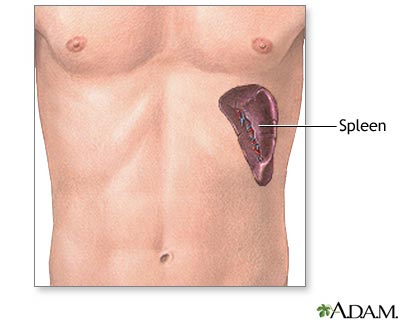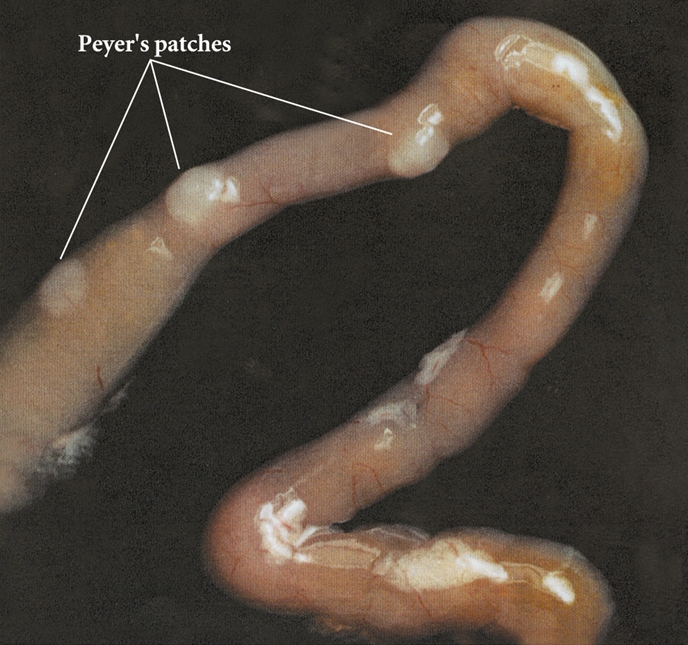Lymphatic System
Tuesday, May 17, 2011
Organs Involved
- Spleen: filters and cleanses blood of bacteria, viruses, and other debris. Provides a lymphocyte profileration. Destroys worn-out red blood cells and return some of their breakdown products to the liver.
- Thymus: Produces hormone that programs lymphocytes so they can carry out their protective roles in the body.
- Tonsils: traps and remove bacteria or any other foreign pathogens entering the throat.
- Peyer's patches: capture and destory bacteria in the intestinal wall
- Lymph nodes: help protect the body removing foreign material
- Lymphatic vessels: to form an elaborate drainage system picks up this excess tissue fluid
The First Line of Defense
- Skin
- Keratin: provides resistance against acids, alkalis, and bacterial enzymes
- Mucous Membrane
- Nasal Membrane: Filter and trap microorganisms in nasal passages
- Secretions of skin and mucous membrane
Second Line of Defense
This line of defense uses enormous number of cells and chemicals to protect itself. It mainly relies on phagocytes, natural killer cells, and inflammatory response.
- Phagocytes engulf foreign particles.
- Natural killer cells police the body in blood and lymph are a unique group of lymphocytes that can lyse and kill cancer cells amd virus-infected body cells.
- Inflammatory response is a nonresponse that is triggered whenever body tissues are injured.
Adaptive/ Specific Defense System
Specific or Adaptive defense system is often referred as the body's third line of defense.
This defense recognizes foreign molecules and acts to inactivate or destroy them.
Lymphocytes act directly by lysing foreign cells.
Lymphocytes act indirectly by releasing chemicals that enhance the inflammatory response or activate other immune cells.
This defense recognizes foreign molecules and acts to inactivate or destroy them.
- It is antigen specific- It recognizes and acts against particular pathogens or foreign substances.
- It is systemic- Immunity is nor restricted to the initial infection site.
- It has "memory"- It recognizes and mounts even stronger attacks on previously encountered pathogens.
Lymphocytes act directly by lysing foreign cells.
Lymphocytes act indirectly by releasing chemicals that enhance the inflammatory response or activate other immune cells.
Antigen
Antigens are large, complex molecules recognized as foreign by the body. Foreign proteins are the strongest antigens.
Antigens also provoke immune responses.
Self antigens are antigens that only one individual obtains.
Incomplete antigens are small molecules that are unable to cause an immune response by themselves but do so when they bind to body proteins and the complex is recognized as foreign.
Antigens also provoke immune responses.
Self antigens are antigens that only one individual obtains.
Incomplete antigens are small molecules that are unable to cause an immune response by themselves but do so when they bind to body proteins and the complex is recognized as foreign.
Antibodies
Antibodies or immunoglobulins (Igs) are soluble proteins secreted by activated B cells or by their plasma-cell offspring in response to an antigen and are capable of binding specifically with that antigen.
An antibody is composed of four polypeptide chains (two heavy and light) that form a T- or Y- shaped molecule.
An antibody is composed of four polypeptide chains (two heavy and light) that form a T- or Y- shaped molecule.
There are five classes of antibodies:
- IgA
- IgG
- IgM
- IgD
- IgE
Antibody functions include complement, fixation, neutralization, precipitation, and agglutination.
Acquired Immunity
Active immunity is when your B cells encounter antigens and produce antibodes against them.
Passive immunity is obtained by plasma cells and antibodies obtained from serum of an immuane human or animal donor.
- Naturally Acquired during bacterial and viral infections
- Artificially Acquired when we receive vaccines
Passive immunity is obtained by plasma cells and antibodies obtained from serum of an immuane human or animal donor.
- Naturally Acquired when the mother's antobodies cross the pacenta and enter the fetal circulation and after borth during breastfeeding.
- Artifically Acquired when one receives immune serum.
Homeostatic Imbalances
Most important disorders of the immune system are autoimmune diseases, allergies, and immunodeficiencies.
Autoimmune diseases- the body produces antibodies and sensitized T cells that attach and damage its own tissues. A few examples include:
Allergies- abnornally vigorous immune responses in which the immune system causes tissue damage as it fights off a perceived "threat" that would otherwise be harmless to the body. The most common allergy is:
Immunodeficencies- include both congenital and acquired conditions in which the production or function of immune cells or complement is abnormal.
Autoimmune diseases- the body produces antibodies and sensitized T cells that attach and damage its own tissues. A few examples include:
- Multiple sclerosis- which destroy the the white matter of the brain and spinal cord
- Graves' Disease- which the thyroid gland produces excessive amounts of thyroxine
Allergies- abnornally vigorous immune responses in which the immune system causes tissue damage as it fights off a perceived "threat" that would otherwise be harmless to the body. The most common allergy is:
- Immediate Hypersensitivity- this is triggered by the release of a flood of histamine when IgE antibodies bind to mast cells. Histamine causes small blood vessels in the area to become dilated and leaky and is largely to blame for the best-recgnized symptoms of allergy: a runny nose, watery eyes, and itching.
Immunodeficencies- include both congenital and acquired conditions in which the production or function of immune cells or complement is abnormal.
- Acquired Deficiency Syndrome- is currently the most important. This syndrome cripples the immune system by interfering with the activity of helper T cells.
Subscribe to:
Posts (Atom)













